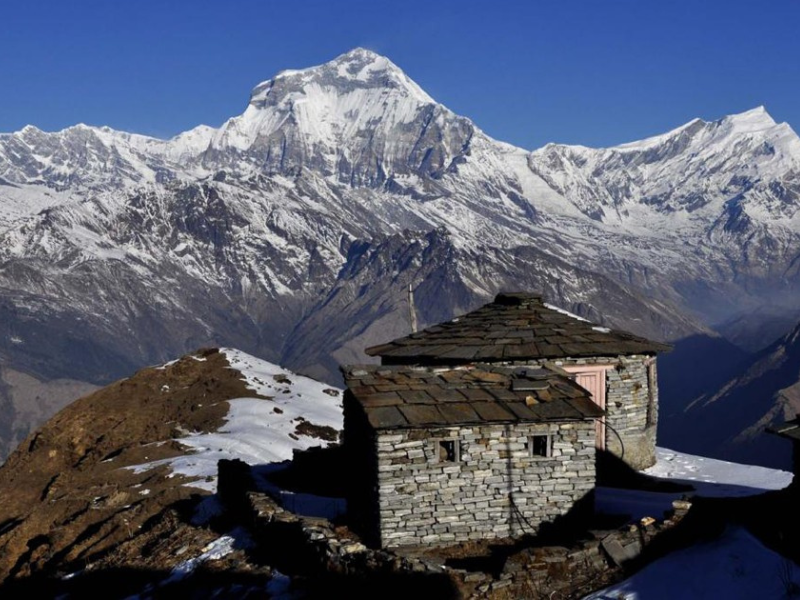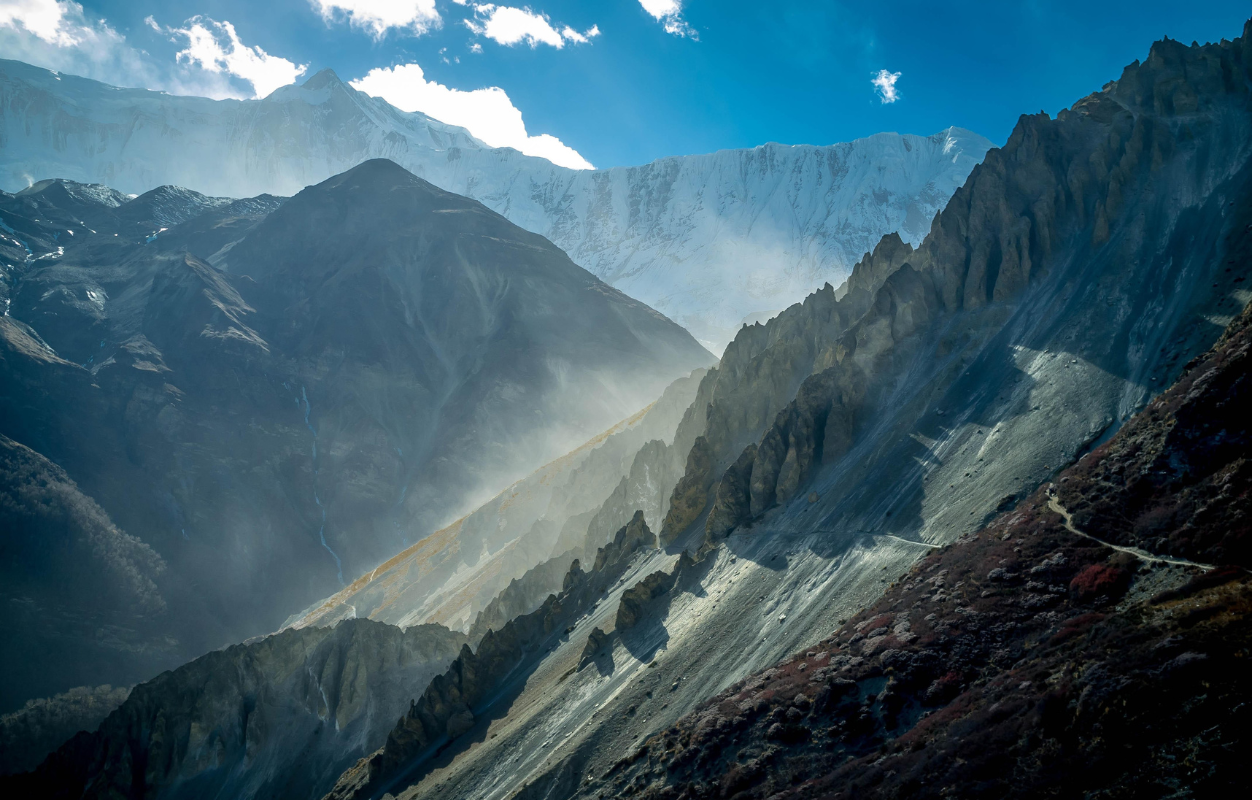Overview:
Among the many treks in the Annapurna region, the Muldai View Point is one of the new introductions. Often overshadowed by its famous counterparts, this is a lesser-known trek. From the summit of Muldai View Point, trekkers can witness a peaceful and serene environment. Trekkers can witness 360-degree views of towering peaks such as Annapurna, Dhaulagiri, and Machchapuchhre.
This trek is part of the longer Khopra Ridge trek and is based on a community service system. Along the trail, you can stay in homestays run by local communities, which promote their culture and traditions. You will be overwhelmed by the warm hospitality of the locals in Ghandruk as you make your way to Muldai View Point. In this article, let’s explore this underrated yet scenic trek in detail.
Itinerary
- Day 1- Kathmandu-Pokhara: You can choose between the two ways to travel to Pokhara. Either book a 30-minute flight to Pokhara or drive 7-10 hours by road. Stay overnight in Pokhara, the tourist capital of Nepal.
- Day 2- Pokhara-Ghandruk: Start by driving to Nayapul, Pokhara, which takes about 1 hour to reach. From Nayapul, you start your trek towards Ghandruk. In around 5-6 hours, you’ll reach Ghandruk, crossing rivers and enjoying the views of Annapurna South and Machchapuchhre.
- Day 3- Ghandruk-Tadapani: On the third day, you’ll walk approximately 4-5 hours through dense forests. You can enjoy the serene environment around this place and watch as the landscape changes. As you ascend, the temperature drops gradually. You can stay at a lodge in Tadapani.
- Day 4- Tadapani-Dobato: On the fourth day, you can enjoy the tranquility of the less-traveled path. The elevation reaches above 3000 meters on this day. After walking for 5-6 hours, you’ll reach Dobato, 3420m.
- Day 5- Dobato-Muldai View Point: On the fifth day of the trek, you’ll reach your destination. At 3637 meters, Muldai is one of the most underrated viewpoints in the Annapurna Region. After spending some time at the top, return to Dobato. Stay the night there.
- Day 6- Dobato-Ghorepani: Trek from Dobato to Ghorepani on the sixth day. The return trek is much easier than the ascend.
- Day 7- Ghorepani-Nayapul-Pokhara: On the last day, trek towards Nayapul and drive back to Pokhara, ending your amazing trek to Muldai.
Facts of Muldai View Point Trek:
- Duration: 6-7 days
- Trek’s Max Elevation: 3637 meters
- Walking: 5-7 hrs per day
- Starting Point: Nayapul
- Destination: Muldai View Point

Highlights Of The Muldai View Point Trek:
- Trek through the beautiful Annapurna Region with amazing landscapes and stunning views of the Himalayas.
- Interact with locals and learn about their way of life to experience the rich cultural aspect of the Annapurna region.
- Off-the-beaten-path for people seeking solitude.
- Less strenuous trail in comparison to other Annapurna region’s treks.
- You can relax after the trek in Pokhara for 1-2 days.
Practical Informations
Best Time To Visit Muldai View Point
The best times to visit Muldai are Spring and Autumn. The skies are clearer around these times, so you’ll have a clear mountain view. Avoid trekking during the winter and monsoon seasons. Snow and rainfall make it much harder to trek to this region, and poor visibility makes navigating the route very challenging.
What To Pack For The Muldai Trek
Be prepared, as the temperature around this place is always chilly. Pack warm clothes and carry a big trekking bag and a trekking stick too. Be sure to carry enough water and food that’ll last you the entire trek.
Some Tips For The Trek:
- Stay Hydrated and carry medicines for altitude sickness and illness.
- Start earlier on each day and take multiple stops along the trail to avoid any physical injuries.
- Stay on the designated trail. Do not stroll outside the trek’s trail; without a map, you can easily get lost in the vast wilderness of the Annapurna Region.
- Respect the local culture and do not litter on the trail.
Conclusion
Enjoy the trek to one of the most underrated trails in the Annapurna region. As you ascend, witness amazing landscapes and changing terrain. Be sure to pack wisely and be well-prepared for the trek. Enjoy the local culture and acquire all the required permits and cards to have the best time on the trail.
Also Read: Trek Smart: A Guide To Essential Items For Trekking


0 Comment